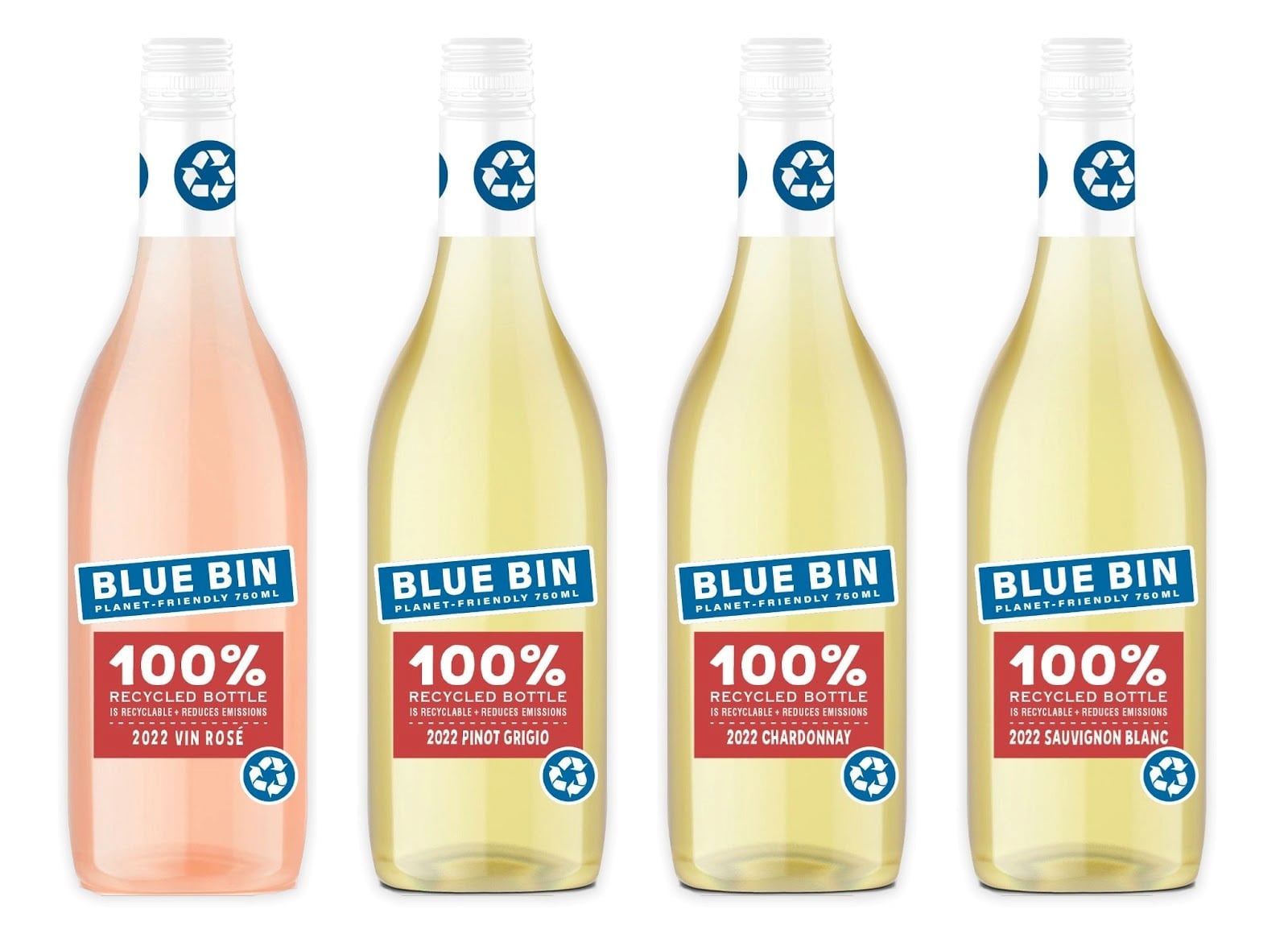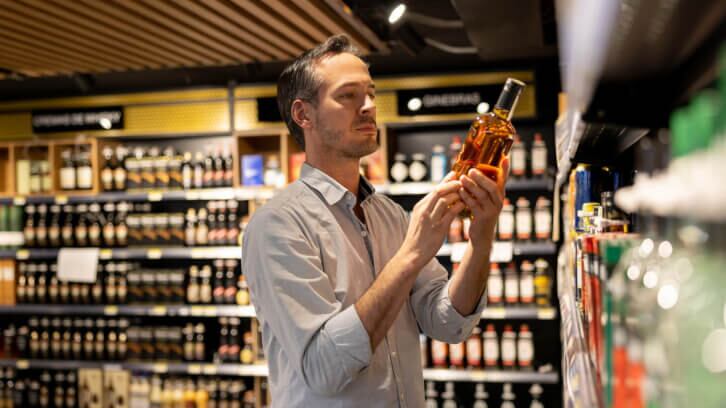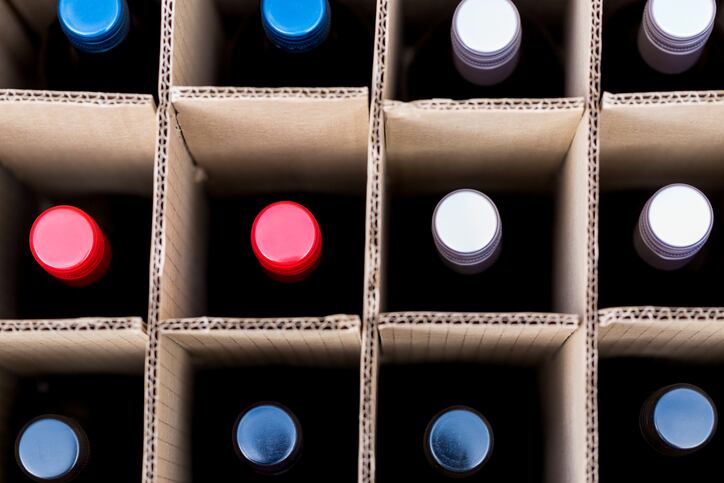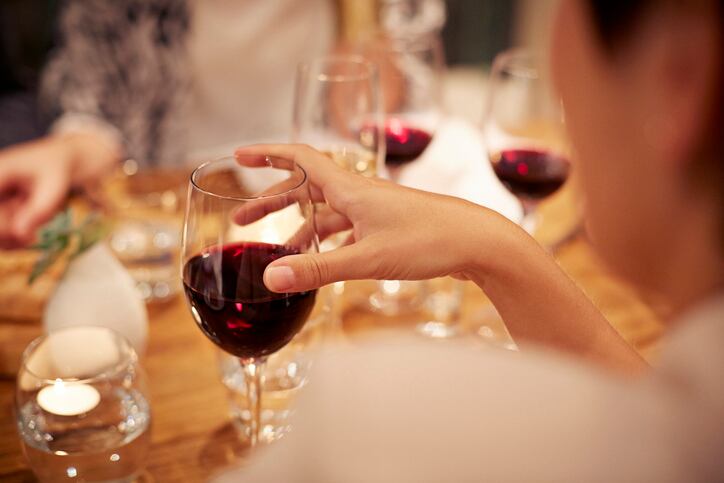Glass packaging is by far the biggest contributor to wine’s carbon footprint – accounting for 29% of packaged wine’s footprint, according to a report from California’s Wine Institute.Not only is glass energy-intensive to produce, but its heavy weight also increases emissions during transportation. That means addressing packaging is the biggest target when it comes to thinking about how to make the wine industry more sustainable.
Could plastic be fantastic?
And although plastic bottles are commonly demonized, B Corp certified Ron Rubin Winery believes its newly-launched rPET bottles help it create wine ‘that’s 100% sustainable, inside and out’.
The Blue Bin brand (the name being a nod the the blue recycling bin) launched in June in four 2022 vintage varieties: Vin Rosé, Pinot Grigio, Chardonnay and Sauvignon Blanc. Ron Rubin Winery, which is one of only 33 Certified B Corporation wineries in the world, ensures every wine across its portfolio has the Certified Green Seal (verifying sustainable farming which emphasizes environmentally and socially responsible practices).
Blue Bin's rPET bottles come in at 85% lighter than traditional glass bottles (52.8g as opposed to 530g). That's where its key advantages come into play: helping allow for more cases per truckload and reducing carbon emissions.
Rob Rubin Winery also quotes a Life Cycle Assessment (LCA) report from plastic industry association NAPCOR (National Association for PET Container Resources), which looks at transportation alongside other factors (such as the energy required to make the packaging in the first place), which states that ‘glass bottles have the highest impacts for most environmental metrics evaluated, followed by aluminum cans, then PET bottles’ – highlighting, that plastic bottles ‘produce significantly fewer greenhouse gas emissions’ and ‘require less energy to produce than glass and aluminum counterparts’.
A premium experience?
Blue Bin’s wine is touted as a premium brand, with a $15 retail price which the brand estimates as comparable to a premium glass bottled wine retail price.
While plastic may not scream premium cues to most drinkers, Robin points to the quality of the wine itself and the advantages that a plastic bottle can give consumers over a wine bottle.
The bottle is made with 100% recycled polyethylene terephthalate plastic, and is lined with Plasmax, an ultra-thin protective layer of glass designed to ensure the wine’s taste and quality is protected (it prevents the wine from ever touching the rPET layer).
While the bottle only gives wine a shelf life of 18 months, the winery believes this isn’t a problem for the vast majority of consumers (90% of wine is consumed within a week of purchase, it says).
And the winery believes plastic offers an alternative that allows wine to be enjoyed ‘where traditional glass wine bottles can’t or shouldn’t go’. That could mean picnics, being out on the beach or camping – anywhere where the weight and fragility of glass could pose a problem – thus offering an advantage over glass bottles.
While glass is recyclable, ensuring it ends up in the recycling bin is another challenge - figures from the US Environmental Protection Agency put glass container recycling figures at around 31%.
Alas, PET recycling rates in the US are not terribly different – NAPCOR’s 2021 PET recycling report estimated that the US PET recycling rate inn the US is 28.6% (and Greenpeace puts this estimate far lower) - but NAPCOR highlights that 2021 saw the largest amount of postconsumer PET ever collected.
Despite its interior glass layer, Blue Bin’s bottle remains 100% recyclable. “PET is 100% recyclable and can be recycled again and again. The APR considers this bottle as recyclable, even with the glass barrier. This has also been approved by the FDA,” says Robin.
While consumers will notice that a PET bottle handles differently to a glass one, Robin believes the convenience advantages will be what wins consumers over.
“The [inner Plasmax] protective barrier holds the wine, while the PET bottle holds the shape. There is a notable difference in the size of the bottle compared to a traditional wine bottle, due to the thinness of plastic compared to glass. This allows for more rPET wine bottles to be shipped per truckload, further backing the sustainability. Consumers will enjoy taking their wine to places where glass bottles cannot go.”




